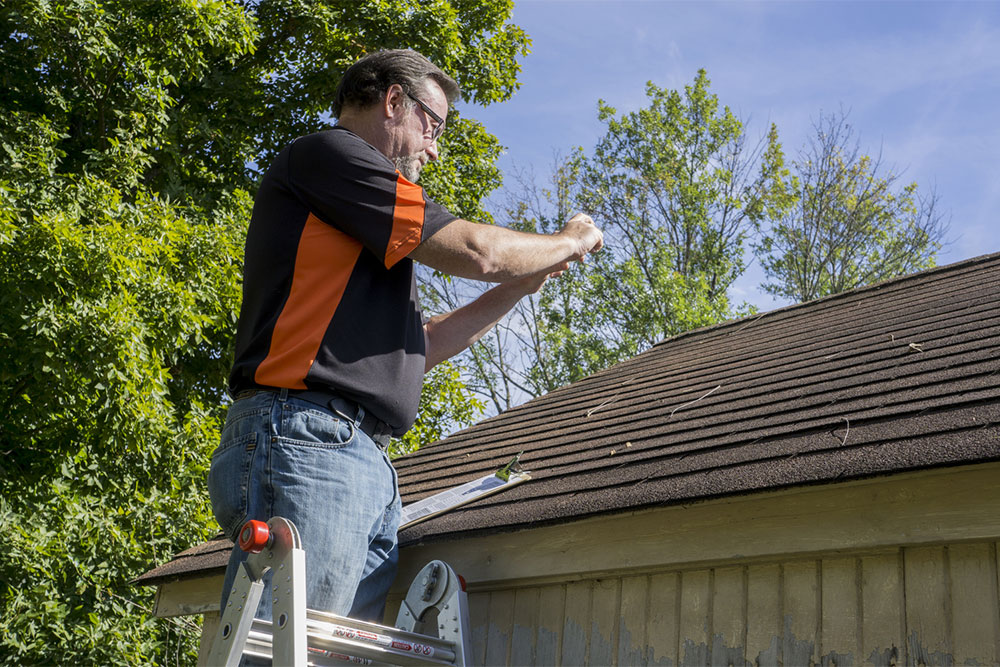7 common roofing mistakes to avoid

Roofing is an important part of construction and renovation. It involves installing a roof, which is necessary to avoid damage caused by water and other environmental factors. Improper installation or mistakes while replacing and installing a new roof can lead to further damage, eventually compromising the structure of the house. This can end up costing one even more. So here are a few common mistakes that should be avoided when installing a roof:
1. Laying new shingles on old ones
When installing a new roof, one of the biggest mistakes to avoid is laying new shingles on old ones. Doing so can leave gaps where water and dust might begin collecting on the roof. Over time, this can damage the roof even quicker, requiring the homeowners to shell out even more money to repair their roof. Plus, if there has been a lot of damage due to water and dirt, homeowners may spend more than they initially did. Removing the old shingles before installing the new ones is vital to avoiding these hassles.
2. Failing to lay shingles on the overhang correctly
The next aspect to take care of when installing new shingles is to secure them properly at the overhang. This means that shingles need to be installed so that they protrude out. But even this little extension should be properly measured. Suppose the overhang is too small. This will create a risk of water seeping through the roof’s rake and damaging it. If the overhang is too big, the shingles at the end may not have the best support and could get blown off in strong winds and storms. The ideal shingle overhang size is between 6 and 10 mm.
3. Nailing the shingles incorrectly
There are certain rules that contractors need to follow when using nails for roofing. Nails should be placed under the shingles. In no way should the nails remain exposed. If that happens, they will corrode, consequently weakening and damaging the roof. Furthermore, nails should be used according to the type of shingles being installed. This ensures that the shingles remain properly fastened and do not move in any way. Contractors must also ensure they use the recommended number of nails to install shingles. Fewer nails are not enough to secure shingles and can easily be unfastened during windy days. Insurance companies also check whether these rules have been followed when a claim is made for roof failure. If these guidelines are not met, the insurance provider could reject the claim.
4. Not ensuring proper ventilation for the attic
The attic space is integral to the structure of the roof, which is why homeowners and contractors must ensure that the building is built correctly and has proper ventilation. If the attic does not have adequate ventilation, there will be no way for its heat to escape. And if the attic overheats, it can cause damage to the roof. Also, overheating and moisture buildup in the attic can even damage the insulation of the house. Consequently, it will lead to a steep rise in energy bills.
5. Not installing new flashing
One of the most common roofing mistakes homeowners make to cut costs is reusing old flashing. This could prove a costly mistake, as it could quickly damage the new roof. Simply put, flashing is a thin metal sheet that covers roof features (like vents and chimneys) to protect them and the roof from water damage. Since old flashing sheets have already been used for a long time, there are chances they may not be as strong anymore. To avoid the risk of them getting damaged soon, it is better to spend a little more and get new flashing sheets to increase the new roof’s longevity.
6. Neglecting to install a rain gutter
One of the most common roofing mistakes homeowners make to cut costs is reusing old flashing. This is a costly mistake, as old flashing can quickly damage the new roof. Simply put, flashing is a thin metal sheet that covers roof features (like vents and chimneys) to protect them and the roof from water damage. Since old flashing sheets have already been used for a long time, there are chances they may not be as strong anymore. To avoid the risk of them getting damaged soon, it is better to spend a little more and get new flashing sheets to increase the new roof’s longevity.
7. Not following the manufacturer’s guidelines
For all homeowners, roofing contractors must follow the guidelines set by manufacturers for different materials. For instance, they need to ensure that the guidelines set by their manufacturers are followed when installing shingles. This goes for installing flashing and other roofing materials as well. If this is not ensured, the manufacturer will not honor the warranty in case of any damage to the materials. This would eventually result in a lot of financial losses.







